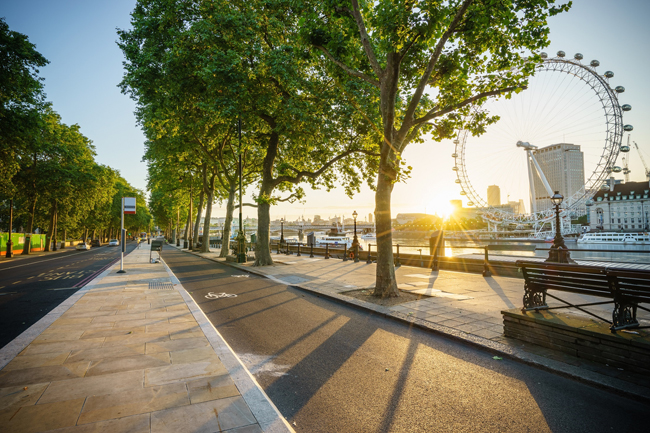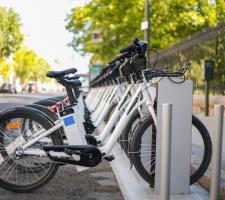
UK cities must learn from the Netherlands and Denmark if active travel and increased safety for vulnerable road users are to co-exist, says TRL’s Marcus Jones
Active travel’ refers to modes of transport in which physical effort is required to undertake purposeful journeys - for example, walking or cycling to school, work or the local shops, as well as walking and standing as part of accessing public transport. The benefits of replacing short car journeys with more active forms of transport are obvious. Active travel promotes healthier lifestyles, reduces congestion, improves air quality and is a low-cost, socially inclusive mode of transport. In fact, studies suggest that 60% of Londoners could meet their minimum physical activity needs from walking or cycling for transport1.
TRL’s exploratory analysis of Stats19 and the
The analysis estimated the additional casualties among cyclists and pedestrians based on published 2015 data. Importantly, the predicted increase is significantly lower than a direct projection of current casualties, due to an effect known as Safety in Numbers (SiN). This is a widely observed relationship between more cyclists on the roads and a reduced collision risk per cyclist. Taking SiN into account, estimates suggest that if 50% of short trips carried out by car in 2015 were replaced by bicycle, an increase of 2,505 cycling casualties would result. Without a SiN adjustment that estimate increases dramatically to 41,472. However, further research is required to quantify the SiN effect more robustly and to fully understand the mechanisms through which it might arise.
Healthy mobility
It is also important to recognise that, when considering the whole population, the increased casualties among pedestrians and cyclists are offset by improvements in health arising from their increased physical activity. Indeed, research has shown that regular cyclists have a lower level of mortality from all causes than the general population, with three hours per week of cycle commuting estimated to reduce mortality by 28%3. However, balancing population-wide health benefits against individual casualties is not an easy moral judgement.
It is easy to focus on the rise in predicted casualties and reconsider the merits of healthy mobility, especially when weighed against the seemingly unavoidable rise in casualties. But this doesn’t have to be the case. It is completely possible for healthy mobility and increased vulnerable road user (VRU) safety to co-exist.
One of the ways we can approach this is to look to nations, like the Netherlands and Denmark, where active travel is a safe transport alternative. It’s not enough to claim that cultural or climate-based differences prevent the same standards being reached in the UK. For healthy mobility and VRU safety to co-exist, we need to understand the successes from these countries, the challenges they overcame, and how they adapted their cities to accommodate new designs, infrastructure, policies and initiatives in line with recommendations made by the UK National Institute for Health and Care Excellence.
We can also look at examples of best practice closer to home, to better understand what systemic barriers need to be addressed. It is possible to restore balance to a road system historically designed to prioritise motor traffic that has, as an unintended consequence, imposed risk and inconvenience on VRUs. Following one of the world’s largest cycling infrastructure research programmes, conducted by TRL, TfL created the London Cycling Design Standards (LCDS). Cyclist fatalities decreased by 40% in London in 2017 (compared with the 2005-09 baseline)5, despite the number of journeys cycled in the capital more than doubling since 2000 to 730,000 per day.
Right environment
Although other factors no doubt contributed to this rise in VRU safety, throughout this period of growth in cycling journeys, TfL has been introducing LCDS infrastructure designed to make cycling both safer and more attractive – demonstrating that it is possible to increase the level of cycling at the same time as reducing casualties.
It’s important that TfL’s successes are mirrored in other UK cities. To do this, we need to create the right environment for safe active travel to thrive. The link between infrastructure and road-user behaviour cannot be underestimated.
Tactically, this means concentrating efforts on reducing traffic speed, not by retrofitting speed bumps but by designing people-friendly streets that encourage lower speeds from the outset. Infrastructure modifications, along with enhanced enforcement of speed restrictions, which in time could also include in-vehicle enforcement, would also serve to maximise safety potential for VRUs.
Creating more space is also key. Reallocating road space to accommodate segregated cycle lanes within the carriageway, while maintaining priority and directness, will help to avoid increasing conflict with pedestrians and with motor traffic at junctions, which represent collision hotspots for VRUs. For pedestrians, wider footpaths that are free of obstacles and anti-glare surfaces – and designed to appropriately accommodate the needs of people with impaired vision or mobility, along with increased routes and public transport links to parks and green spaces - could contribute to not only a better integrated transport system but more inclusive and safer active travel too. This could be taken one step further by creating pedestrianised zones and motorised traffic-free spaces to maximise safety and improve air quality.
Creating space
Creating a physical environment that is safe, comfortable, convenient and direct includes improving crossing provision for pedestrians, especially on busy roads. To improve uptake, whilst at the same time promoting safety, people shouldn’t have to go out of their way to find somewhere safe to cross. Additionally, improving waiting times – and the time allocated for crossing – at signalised crossings would also deliver benefit.
Creating space and segregation is essential but does risk a loss of priority, especially for cyclists. For example, UK design practices typically favour turning vehicles at cross side roads. That said, if increased VRU safety is to prevail, there is a clear need for redress. By shifting priority to cyclists and introducing new approaches like the ‘Dutch Roundabout’, in addition to designs that reduce the speed of turning vehicles and initiatives that promote driver responsibility awareness, overall safety could be vastly improved. These ideas could be used to reinforce current Highway Code rules on pedestrians’ priority and for segregated cycle tracks. Another possible solution would be to review presumed liability laws and introduce legislation that places the onus on motorised road users to take greater responsibility for collisions with VRUs.
Healthy mobility represents a core element of the UK’s future of transport. Examples in the UK and overseas show that if we take a ‘mobility by design’ approach that places safety at the centre of initiatives from the onset, then we can - as individuals and as a society - reap the rewards of active travel, without compromising safety.
- (Woodcock and Goodman, 2014)
- www.trl.co.uk/reports/healthy-mobility-and-road-safety
- (Copenhagen heart study, 2000)
- www.nice.org.uk/news/article/new-and-upgraded-roads-should-prioritise-pedestrians-cyclists-and-public-transport-over-motorised-vehicles
- http://content.tfl.gov.uk/casualties-in-greater-london-2017.pdf






